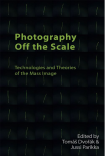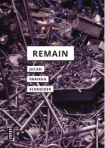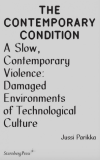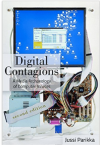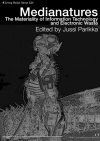Queuing
This is a chapter from a couple of years back but reading something today on queuing (as ordering, waiting, allocating, as Celia Lury puts it in her wonderful new book Problem Spaces) made me return to it and also post here. The chapter on “Underpinning Time” focuses on questions of microtemporality that creates publics or collectives as being modulated through cultural techniques of of temporality in networks. While the chapter is far from a full-fledged take on queuing, of standing in line and waiting for ones turn, it starts with the core scene that defines also a certain moment of network time/allocation of packets in traffic.
“The Underpinning Time” came out in the collection Digital Memory Studies edited by Andrew Hoskins.
Premio Limina 2020 // book award
I am extremely happy to learn that we won! The Italian translation of What is Media Archaeology? – Archeologia dei media – was awarded the XVIII Premio Limina in the category of “Best Italian Translation of an Important Contribution to Film Studies” (Miglior traduzione italiana di un importante contributo agli studi cinematografici). The translators Enrico Campo and Simone Dotto, and the editors and writers of Preface and Postface Simone Venturini and Ruggero Eugeni are the ones to thank and to congratulate for their work.
The book came out last year Autumn just when I was starting my visiting Professorship, Chair of Media Archaeology, at University of Udine; students and colleagues (including at the Gorizia’s La Camera Ottica) provided such a friendly and exciting academic environment in cinema studies where the book’s idea of “traveling media archaeology” was (again) realized in multiple ways: institutional and practice-based contexts, including practice of theory, where media archaeology travels.
All the winning books here alongside justification statements for the awards.
You can find the Italian version on publishing house Carocci’s pages, and the original English on Polity pages.
For Italian speakers, here’s an interview/text in Artribute about the translation.

Images Beyond Control
The next in line of our Operational Images and Visual Culture project’s events at FAMU at the Academy of Performing Arts in Prague takes place on November 6th. After our previous events Photography Off the Scale and Expert-Readable Images, this one is titled Images Beyond Control. Michal Šimůnek and Josef Ledvina from our project team took the lead in developing the theme that makes reference to two key centennials closely related to Prague – the birth of Vilém Flusser, and Čapek brothers’ invention of the word robot.
You can find the program, a longer description, and the instructions on how to join on Zoom or YouTube here!

+ Thanks to Abelardo Gil-Fournier for designing the poster.
Eight Fragments on Eight Stones – CORES
Rick Silva and Nicolas Sassoon’s new art project CORES is launched online. With Elise Hunchuck, we had the pleasure of writing the text, “Eight Fragments on Eight Stones”, to accompany the digital animations based on rock scans. See below an excerpt and check out the whole piece online!
“Here, on the lithosphere, where the earth meets the sky, there exists a long history of how rocks and stones can be seen as images and can be read as texts. A multitude of worlds has been interpreted through surfaces of stones as they depict worlds. Imaginary or not, they reflect historical events — a vertiginous array of scales, landscapes, and — sometimes — ruined cities. But they also include abstract forms and lines that offer geological points of origin for questions, including those of art and aesthetics. From the poetics of stones to the geological, we are nowadays more likely to count, classify, and catalogue than romanticise: geological surfaces and stratifications are measured and mapped such as in the cartographic codes for lithographic patterns. From sandy and silty dolomite to sandstone and shale, quartzite and granite to igneous rock the surface and subsurface are a slowly-unfolding inscription of different minerals.”
Read and see the rest on CORES website.

Touch, Click, and Motion: Archaeologies of Fashion Film After Digital Culture
Submitted! The final version of our introduction article with Caroline Evans for the special issue “Archaeologies of Fashion Film” is now in with the journal. Forthcoming in Journal of Visual Culture, the text – and the issue – emerge from the AHRC project that I posted about earlier (the project ran 2017-2019) – here’s the original (not updated anymore) project website. Below the abstract of our article.
Caroline Evans and Jussi Parikka
Touch, Click, and Motion: Archaeologies of Fashion Film After Digital Culture
This article functions as the introduction to the theme issue on Archaeologies of Fashion Film. The text introduces fashion film as a genre and as a historically dynamic form of audiovisual expression that we approach through fashion history, media archaeology, and new film history. While introducing key concepts and approaches, we propose a form of ‘parallax historiography’, a term emerging from Thomas Elsaesser’s work, that links different time periods from early cinema to recent digital platforms, even ‘post-cinema’. The introduction makes references to the contributions in this issue that address historical conditions of emergence, marginal voices in the historical record, and unexcavated archival materials; and the issue shows how they all contain feedback loops or recursive traits that resonate in contemporary practice where infrastructures of platforms and data frame the moving image. Fashion film is thus seen as both a historical and a constantly practiced audiovisual form of expression that is not contained in its own industry genre, although that industry should not be ignored either. This article then helps to set the stage for acknowledging the current accelerated change in contemporary fashion communications, and offers visual cultural insights in order to rethink new modalities of fashion, film and bodies in motion.
The issue also contains articles by Marketa Uhlirova, Nick Rees-Roberts, Marie-Aude Lous Baronian, Lucy Moyse-Ferreira, and Wanda Strauven.

Seed, Image, Ground
The new video essay Seed, Image, Ground is the most recent example of our collaborative work with Abelardo Gil-Fournier emerging from our project on vegetal surfaces and media aesthetics. Launched today, the video was commissioned by Fotomuseum Winterthur as part of their cluster Situations/Strike. Below the introduction text and the video! Please contact me or Abelardo for any queries related to possible video installation versions of the piece.
***
Seed, Image, Ground (2020)
Seed bombing is a technique used in forestry, agriculture, and environmental restoration where biodegradable containers filled with seeds and soil nutrients are dropped from flying aircrafts to the ground. Conceived after WW2 by an RAF pilot, its use has been fostered during the last decade, linked to the increased deployment of robotic aerial vehicles in environmental monitoring.
Seed, Image, Ground works with selected promotional images and videos related to seed bombing. It combines them with footage showing the movements of seeds and leaves, and the growth of plants. The video essay concerns the link between images, seeds, aerial operations, and transformation of earth surfaces into data. It acknowledges how the history of botanic knowledge and visual surveys of green surfaces is a history of images, and how the latter is also a history of circulation, speed, and motorised aircraft. Such images operate much beyond visuality.
Seed, Image, Ground offers an alternative way of understanding “the strike.” From metaphors of war to guerrilla farming, from agricultural techniques and reforesting to the automation of airspace and environmental management, the observation of growth of vegetal surfaces unveils connections to parallel histories of the logistics of military perception.
Sound design by María Andueza Olmedo. Research for the video essay was supported by the project Operational Images and Visual Culture, situated at the department of Photography at the Academy of Performing Arts, Prague. The project is funded by Czech Science Foundation project 19-26865X.
Sensoria by McKenzie Wark
McKenzie Wark’s new book Sensoria: Thinkers for the Twenty-first Century is out and I am chuffed (as the British say) to be included in the fabulous lineup of theorists and writers that she rolls out in this follow-up of the General Intellects volume.
“As we face the compounded crises of late capitalism, environmental catastrophe and technological transformation, who are the thinkers and the ideas who will allow us to understand the world we live in? McKenzie Wark surveys three areas at the cutting edge of current critical thinking: media ecologies, post-colonial ethnographies, and the design of technology, and introduces us to the thinking of seventeen major writers who, combined, contribute to the common task of knowing the world. Each chapter is a concise account of an individual thinker, providing useful context and connections to the work of the others.
The authors include: Sianne Ngai, Kodwo Eshun, Lisa Nakamura, Hito Steyerl, Yves Citton, Randy Martin, Jackie Wang, Wang Hui, Anna Lowenhaupt Tsing, Achille Mbembe, Eyal Weizman, Cory Doctorow, Benjamin Bratton, Tiziana Terranova, Keller Easterling, Jussi Parikka, Deborah Danowich and Eduardo Viveiros de Castro
Wark argues that we are too often told that expertise is obtained by specialisation. Sensoria connects the themes and arguments across intellectual silos. The book is a vital and timely introduction to the future both as a warning but also as a roadmap for how we might find our way out of the current crisis.”
A Recursive Web of Models: Studio Tomás Saraceno’s Working Objects
My article on Studio Tomás Saraceno’s work is now out in the Configurations journal.

The text follows up from the Palais de Tokyo show On Air (curated by Rebecca Lamarche-Vadel) and I’ve tried to articulate these points in the article in a couple of different contexts. While there is clearly lots (more) to be said about questions of artistic practices with animals (including multispecies ethnography), and what that implies for the field of environmental humanities, I am here a tad more focused on the question of the image, the model, and the exchange between art and science. Admittedly, “art and science” is a rather low res description of many of the actual workings of what happens in such practices, which is also why I have mobilised the term working objects (hat tip to Daston and Galison) in this context (while I acknowledge that so much more could be said). And keep your eyes open for Sasha Engelmann’s work on Studio Saraceno’s work btw.
In the meantime, see also the video “Studio Visit with Tomás Saraceno“.
A Natural History of Logistics
Here’s the video of my Strelka / #TheTerraforming keynote, “A Natural History of Logistics”. Thanks to Benjamin Bratton for the introduction to the talk (and the invitation to be part of The Terraforming Faculty). The talk stems from the seminar and the studio brief we did with the group in February in Moscow. While I outline some theoretical ideas for this synthetic (fake!) discipline, the researchers’ responses in February through mini-projects presented astonishingly good ways how the idea was taken forward: some historically grounded, some speculative, some somewhere in between, takes on soil, seabed mining, geomagnetism, tidal cycles, weeds, and more. Also thanks to Abelardo Gil-Fournier for his lecture and other work for the seminar.
And watch here the projects from the first day:
and the 2nd day in full:
The Terraforming final projects
The final projects of the first Terraforming cohort at Strelka Institute are going to be premiered this week Wednesday and Thursday (July 1 and 2) at 7 pm Moscow time. “The work presented will cover a range of topics of space and sci-fi, artificial food and landscapes, geo- and macro-engineering, and range from speculative design proposals, to cinema, to legal frameworks, to practical propositions for intervention.”


I was happy to be part of the Strelka Institute’s programme as a Faculty member. Working with this massively talented and engaged group of researchers was really a joy. In February, we worked with the brief on “Natural History of Logistics” which is somewhat also the topic of my keynote (on Thursday). The other speakers are: Benjamin Bratton, Lisa Messeri, Helen Hester and Kim Stanley Robinson.


